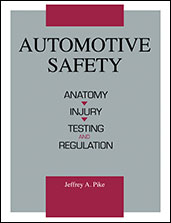Technical Paper
Assessment of Magnetohydrodynamic Angular Rate Sensors in Measuring Ankle Rotations During Vehicle's Crash Tests
2000-03-06
2000-01-0609
While testing vehicles for crash, particularly the offset frontal crash mode, new devices and techniques are needed to enhance the ability to measure rotations of certain vehicle components and dummy parts (or joints). The reason for this new demand is that the capabilities of existing techniques or devices in measuring rotations of small masses in confined areas are limited. Examples of the desired measurements are the rotations of dummy's feet and tibias as well as the rotations of the vehicle's toe-board during intrusion. These measurements help to understand dummy's ankle loads as a result of different intrusion rates. Furthermore, having these measurements is very beneficial to the validation of the computer models used in simulating the behavior of dummy's lower extremities in high intrusion crashes. Recent research demonstrated the use of an angular rate sensor, based on magnetohydrodynamic principles, on Hybrid-III dummies and cadavers.

